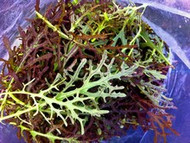How To Grow Chinese Mustard
Grow Your Own Oriental Salads
Spicy Chinese Mustard. Mustard greens are very popular in China for stir-fry, and mostly used cooked. The oriental mustards are a very large group of rather coarse-leaved brassicas, usually having a spicy flavour. The main advantage for the gardener is that they are very robust, tolerating a wide range of soil types, and most are exceptionally hardy. Slower growing than many oriental greens, they are less suitable for cut and come again seedlings.
Ideal for winter harvesting.
Where to grow:
Grow mustard in full sun or partial shade. Plant mustard in well-worked, well-drained soil rich in organic matter. Add aged compost to planting beds before planting.
When to grow:
Plant early in spring or in late August for a Autumn crop.
Transplanting
Plant 10" - 12" apart. From trays or modules harden off and plant out under fleece. Make a hole with a dibber or suitable stick (A piece of an old broom handle is ideal). Place the seedling plug in the hole and firm gently around the roots, water well.
Crop care
Hot weather will cause the plants to bolt just like regular mustard. Keep planting beds weed free. Pull mustard from the garden as soon as it goes to seed to avoid prolific self seeding.
Pests and Diseases
Mustard can be attacked by flea beetles and aphids. Wash these pests away with a blast of water.
Susceptible to white rust. Remove leaves that have white rust. Water plants at the base of the stem keeping moisture off the leaves.
Harvesting
Pick individual leaves when they are young and tender, 3 to 4 inches long, or cut and use the entire plant. Complete the harvest before the weather grows hot; hot weather will cause leaves to become tough and strong flavored. Complete the harvest before the plant goes to seed.
Storage
Mustard will keep in the vegetable compartment of the refrigerator for 2 to 3 weeks. Mustard leaves can be frozen or dried. Mustard seeds can be sprouted.
Cooking
The younger, tender leaves can be used like lettuce and chopped fresh in salads, or steamed as "greens". The older leaves can be chopped in soups, stir-fried, or added to omlettes.

